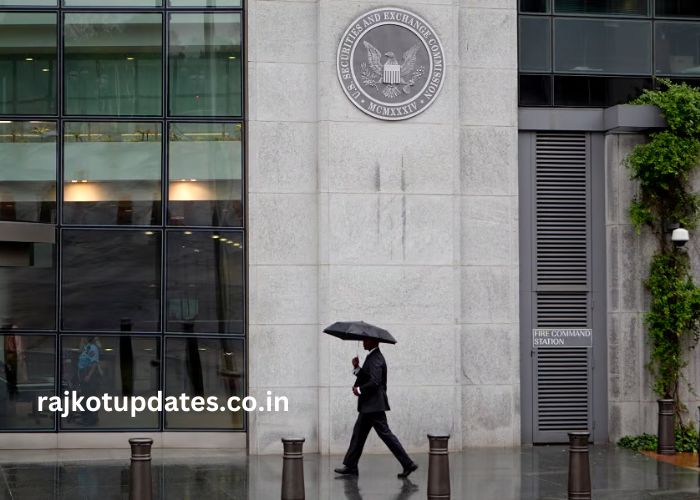In today’s digital world, various identifiers play crucial roles in user management, authentication, and system security. One such identifier is Mutf_in: Sbi_magn_chil_1tcucf9, which is commonly associated with secure systems designed to handle sensitive data or process complex requests. Understanding how Mutf_in: Sbi_magn_chil_1tcucf9 functions can help individuals and organizations manage their digital environments more efficiently.
The complexity of Mutf_in: Sbi_magn_chil_1tcucf9 lies in its application within advanced systems. It can often be a part of a string or key used for ensuring authorized access to secure data. Whether it is linked to a user account, a specific data set, or a custom request, the correct use of Mutf_in: Sbi_magn_chil_1tcucf9 is essential for maintaining the integrity of the system.
What is Mutf_in: Sbi_magn_chil_1tcucf9?
Mutf_in: Sbi_magn_chil_1tcucf9 is a uniquely structured identifier often used in technical applications that require secure data transmission or validation. The format of Mutf_in: Sbi_magn_chil_1tcucf9 suggests that it is part of a larger system or protocol, likely one designed to ensure that certain parameters are met before specific actions are carried out. It could be involved in user authentication, access to restricted information, or other secure system operations.
In essence, Mutf_in: Sbi_magn_chil_1tcucf9 could be seen as a part of a complex system’s security mechanism, used to verify and validate requests or data points. Such identifiers often play a significant role in systems that require the highest levels of protection and ensure that sensitive data is not compromised. Understanding how Mutf_in: Sbi_magn_chil_1tcucf9 functions within these systems can provide clarity on the level of security and precision required for safe data management.
How is Mutf_in: Sbi_magn_chil_1tcucf9 Used in Security Systems?
The primary function of Mutf_in: Sbi_magn_chil_1tcucf9 within a security system is to authenticate and validate a user or system’s request. It can act as a key or token that the system checks before allowing access to restricted areas, verifying the authenticity of the request. Once Mutf_in: Sbi_magn_chil_1tcucf9 is validated, the system can proceed with the task or action requested, such as granting access to sensitive data or performing an operation within the application.
In some cases, Mutf_in: Sbi_magn_chil_1tcucf9 may be associated with specific user roles or permissions within a larger system architecture. This allows for fine-grained control over who can access certain resources and what operations they can perform. The use of such identifiers enhances system security by reducing the risk of unauthorized access, making Mutf_in: Sbi_magn_chil_1tcucf9 a critical tool for safeguarding data and processes.
Can Mutf_in: Sbi_magn_chil_1tcucf9 Be Customizable?
While Mutf_in: Sbi_magn_chil_1tcucf9 appears to be a specific identifier, there are instances where similar identifiers can be customized or configured based on the needs of the system in which they are used. Customization might involve altering certain parts of the identifier to reflect specific access rules, security features, or even user profiles. This level of customization helps ensure that Mutf_in: Sbi_magn_chil_1tcucf9 fits seamlessly into the particular requirements of the system.
For organizations or individuals operating large-scale systems, being able to customize identifiers like Mutf_in: Sbi_magn_chil_1tcucf9 is important for ensuring scalability and flexibility. Customizable identifiers allow for easier adaptation to changes in user management protocols or system architecture, ensuring that the system remains both secure and efficient as it evolves.
How Does Mutf_in: Sbi_magn_chil_1tcucf9 Relate to Other Identifiers?
In some complex systems, Mutf_in: Sbi_magn_chil_1tcucf9 may work in tandem with other identifiers or keys. These other identifiers can be part of a larger authentication mechanism, forming a layered approach to system security. This ensures that multiple levels of validation occur before any critical action is taken. For example, Mutf_in: Sbi_magn_chil_1tcucf9 might be used alongside other factors, such as biometric data, device-based authentication, or even user location data, to provide a comprehensive validation check.
Such multi-layered authentication techniques help ensure that the system remains secure, even if one layer of security is compromised. The inclusion of Mutf_in: Sbi_magn_chil_1tcucf9 within this context further enhances the overall reliability of the system. It is not unusual for large-scale systems to require several identifiers, all of which are carefully validated before granting access to sensitive information or performing high-level operations.
Is Mutf_in: Sbi_magn_chil_1tcucf9 Used in All Types of Applications?
While Mutf_in: Sbi_magn_chil_1tcucf9 is typically used in highly secure systems, it may not be a universal feature across all applications. It is more likely to be used in systems where security is a top priority, such as financial institutions, government systems, or enterprise-level applications that manage sensitive data. For general applications, simpler forms of authentication might suffice, and therefore Mutf_in: Sbi_magn_chil_1tcucf9 may not be necessary.
However, for those operating in environments that require robust security measures, the use of Mutf_in: Sbi_magn_chil_1tcucf9 can make a significant difference in preventing unauthorized access or data breaches. Its use ensures that the system remains secure, reliable, and able to handle high-stakes operations where data integrity is paramount.
How Does Mutf_in: Sbi_magn_chil_1tcucf9 Improve System Efficiency?
Incorporating Mutf_in: Sbi_magn_chil_1tcucf9 into a security system not only enhances safety but also contributes to overall system efficiency. By using such identifiers to streamline the authentication process, systems can quickly verify requests and allow access without unnecessary delays. This level of efficiency is crucial for systems that handle large volumes of data or high numbers of transactions, where speed and accuracy are paramount.
For example, in financial applications, where transactions occur in real-time Mutf_in: Sbi_magn_chil_1tcucf9 can facilitate seamless access control without slowing down the process. By automatically validating requests with such identifiers, the system can focus on executing transactions rather than spending time on redundant checks, improving both user experience and operational efficiency.
What Role Does Mutf_in: Sbi_magn_chil_1tcucf9 Play in Compliance?
For organizations that need to adhere to specific compliance standards, the use of identifiers like Mutf_in: Sbi_magn_chil_1tcucf9 plays a critical role. These identifiers help ensure that only authorized individuals can access sensitive data, which is a core principle of many data protection regulations, such as GDPR or HIPAA. By using Mutf_in: Sbi_magn_chil_1tcucf9, organizations can demonstrate their commitment to securing user data and preventing unauthorized access.
Moreover, Mutf_in: Sbi_magn_chil_1tcucf9 can assist in audit processes by tracking who accessed what information and when, providing a clear and verifiable log of user actions. This tracking capability is essential for maintaining compliance and being able to prove that appropriate security measures are in place to protect data.
How Can Mutf_in: Sbi_magn_chil_1tcucf9 Be Implemented in New Systems?
Implementing Mutf_in: Sbi_magn_chil_1tcucf9 in new systems is a straightforward process, though it requires careful planning and integration. Developers must ensure that the identifier is seamlessly incorporated into the system’s authentication and data management protocols. This might involve modifying existing code to include the validation checks that utilize Mutf_in: Sbi_magn_chil_1tcucf9, ensuring that it integrates well with other system components.
In addition, developers should consider the scalability of the system, making sure that Mutf_in: Sbi_magn_chil_1tcucf9 can be used effectively as the system grows. Proper implementation ensures that Mutf_in: Sbi_magn_chil_1tcucf9 continues to function optimally in larger, more complex systems, meeting security demands as new features are added.
Conclusion
In conclusion, Mutf_in: Sbi_magn_chil_1tcucf9 is a critical component for systems requiring high levels of security and authentication. Whether used for verifying user requests or facilitating data access, Mutf_in: Sbi_magn_chil_1tcucf9 ensures that systems remain protected from unauthorized access. By understanding its role, customization options, and benefits, organizations can enhance the efficiency, compliance, and overall security of their digital environments. As the need for robust data protection grows, the importance of Mutf_in: Sbi_magn_chil_1tcucf9 will undoubtedly continue to increase in many specialized applications.



